Oregon’s Banks-Vernonia State Trail
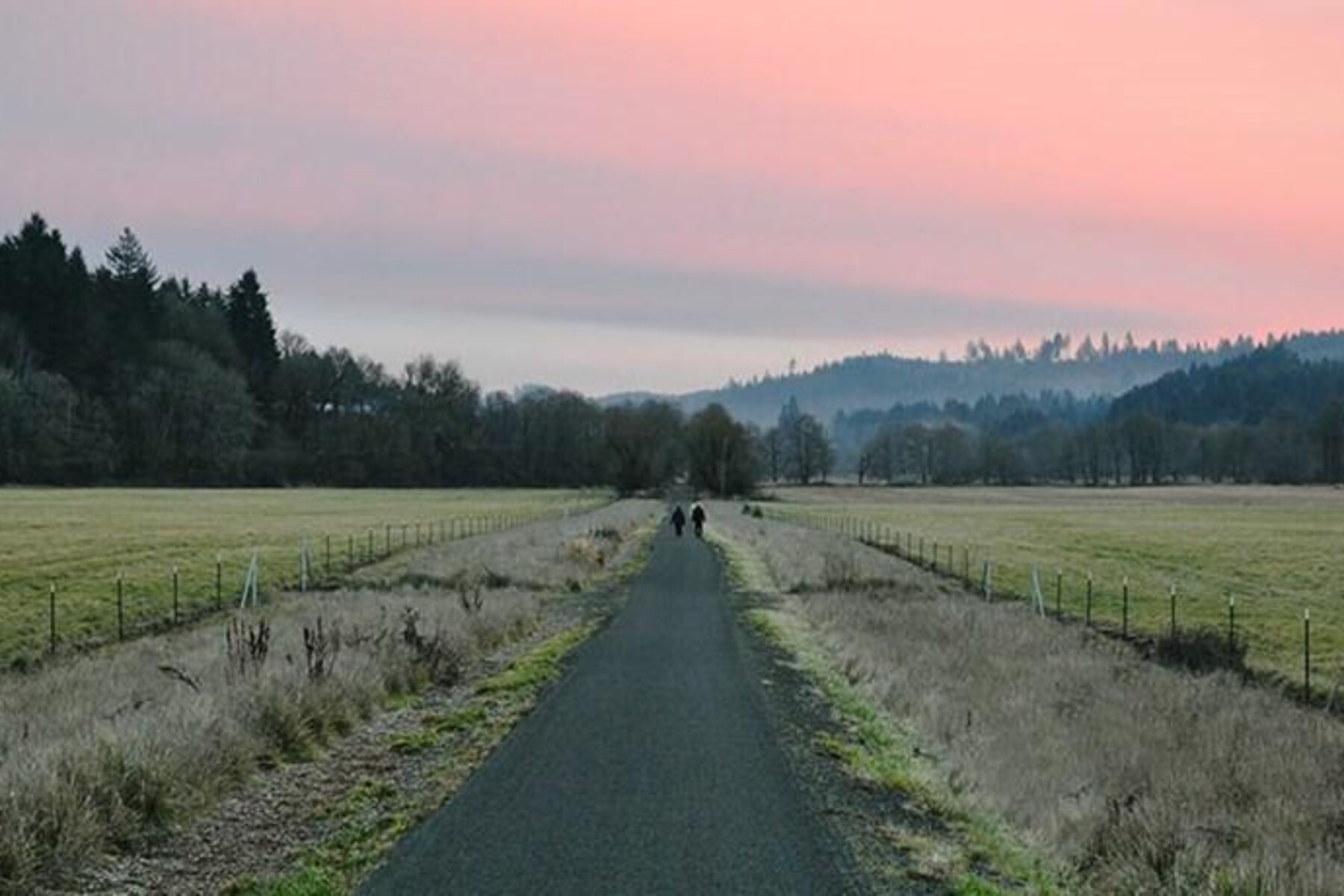
Trail of the Month: January 2016
“It’s close to a major metro area, so lots of people can access the trail, yet you still have this pristine recreational experience.”
A thread of black in an emerald blanket, the Banks-Vernonia State Trail weaves its way between two peaceful towns in the foothills of Northwest Oregon’s Coast Range, less than an hour’s drive from Portland. Most of the 22-mile paved pathway is enveloped by the tall trees that attracted the lumber industry in the early 1900s—a verdant mix of Douglas fir, maple, cedar and alder.
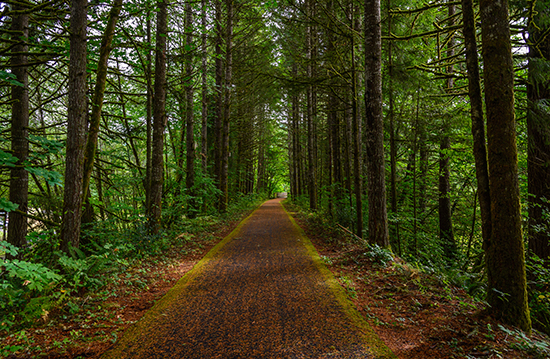
“It’s gorgeous as you’re riding along,” says Len Punzel, owner of Banks Bicycles. “With the trees overhead, it’s like you’re riding through an arched cathedral. In the spring, it’s green, and in the fall, it’s gold. Both seasons are phenomenal.”
It may be hard to imagine this quiet sanctuary as the noisy place it once was with the growling rumble of timber-loaded trains and the steady chop-chop-chop of axes. The Oregon-American Lumber Company, once one of the largest mills in the state, transformed Vernonia from an isolated outpost with fewer than 100 souls into a thriving community that grew tenfold. Today, one of the company’s old buildings houses the Vernonia Pioneer Museum, which tells the story of the region’s history. The town, no longer a hub of the timber industry, is reinventing itself as a destination for outdoor enthusiasts. Visitors will find charming restaurants, coffee shops, bed and breakfasts, and an art gallery downtown.
Although more of a country cousin, Banks, at the other end of the trail, sees its share of tourists, too. Here, the trail’s first few miles offer a contrasting openness; the subdued earthy tones of farm fields unfurl under a canopy of clouds. At the trailhead, Banks Bicycles opened in 2010 in tandem with the paving of the last segment of the trail. Since that momentous October afternoon—a ribbon-cutting attended with great fanfare by the governor and other state and local officials—the shop has seen a steady growth in business.
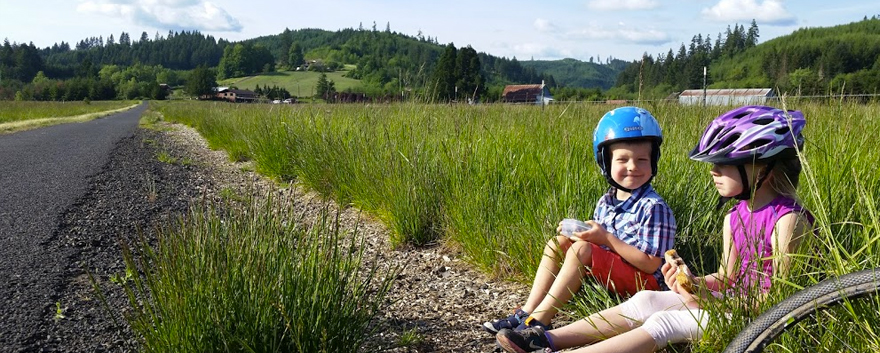
People come from everywhere—from all over the world—to ride this trail. Last year, the bike rentals were insane; we could barely keep up.
“You see a lot of people riding,” says Punzel. “During the good season, it’s well above 3,000 a day on a weekend. People come from everywhere—from all over the world—to ride this trail. Last year, the bike rentals were insane; we could barely keep up.”
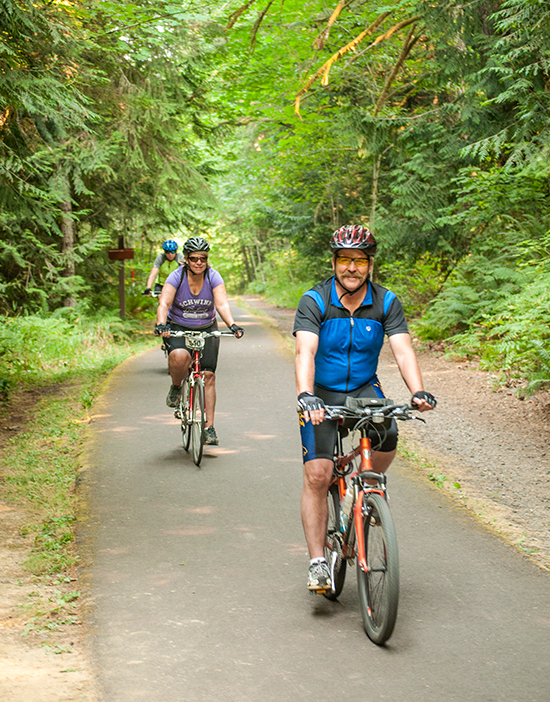
Championed by a handful of local trail enthusiasts in the early 1990s, it was built by Oregon State Parks in several phases over a span of nearly two decades.
“It was the first rails-to-trails project in Oregon, and the state keeps it up, keeps it enjoyable,” says Marsha Kirk, treasurer of Friends of Stub Stewart State Park & Banks-Vernonia Rails to Trails. “If there’s an issue, the state is fantastic about getting people out there, getting things cleaned up and back together. It’s like Rapid Response.”
The final push for the trail’s completion came in 2007 with the opening of L.L. Stub Stewart State Park, through which the trail runs. With a variety of camping options (tent sites, rustic cabins and RV hookups) and other recreational amenities plunked into a postcard-perfect backdrop, the 1,800-acre park became immensely popular. The park’s Discovery Depot, staffed by those early trail enthusiasts who formed the friends group, offers hands-on displays of the area’s wildlife and history specifically geared for young children.
“It’s close to a major metro area, so lots of people can access the trail, yet you still have this pristine recreational experience,” says Justin Parker, park manager for Stub Stewart and the trail. “And it’s family friendly, whether it’s the only trail you do or your base of operations for a longer trip. You can plan as long a ride as you want because there are lots of trailheads on it.”
One of the highlights of the route that will have both children and adults gaping is the Buxton Trestle, spanning 735 feet and with a curve to it so that you can’t see the other end from the start. Rising 80 feet above Mendenhall Creek, this railroad relic is an impressive sight from above or below.
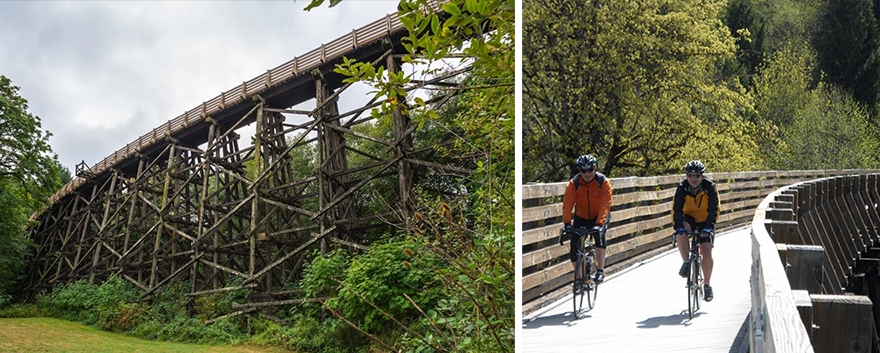
Like the railroad boom that came before, a new transportation era is taking shape here, with several other rail-trail projects under development. Chief among them: the Salmonberry Trail, which will take a wandering 86-mile course from the outskirts of Portland all the way to the Pacific Ocean. The Salmonberry Trail and Banks-Vernonia Trail will meet at the latter’s Manning Trailhead with the Salmonberry heading west and the Banks-Vernonia continuing north. A coalition to lead the effort—the Salmonberry Trail Intergovernmental Agency—officially established itself this past September and hired its first full-time staffer. A concept plan for the trail is in place as well, but much work is yet to be done before shovels hit the ground.
“If it’s built, it will be the mother of all rail-trails,” exclaims Parker. “It’s in the wilderness, and it feels like you’re going back in time.”
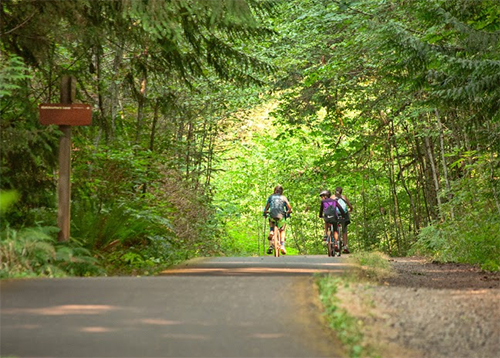
Another exciting rail-trail underway is the Council Creek Regional Trail, a 15-mile route that would stretch from Banks to Hillsboro and connect with the Portland area’s MAX commuter line, making access to the Banks-Vernonia Trail even more accessible by more people.
On the other end of the Banks-Vernonia Trail, the Crown Zellerbach Trail is only a quarter-mile from the Vernonia Trailhead, and Columbia County is actively working to connect the two. Like the Banks-Vernonia Trail, the CZ Trail, as it’s known locally, follows an old logging railroad route through a picturesque forest, though its surface is gravel rather than paved. It travels about 20 miles southeast almost to the Columbia River, ending in the city of Scappoose.
“Since the trail has gone in, there are a lot of projects on the drawing board,” Kirk says. “These trails will connect the whole county, and all of them want to be connected to the Banks-Vernonia Trail.”

Donate
Everyone deserves access to safe ways to walk, bike, and be active outdoors.
